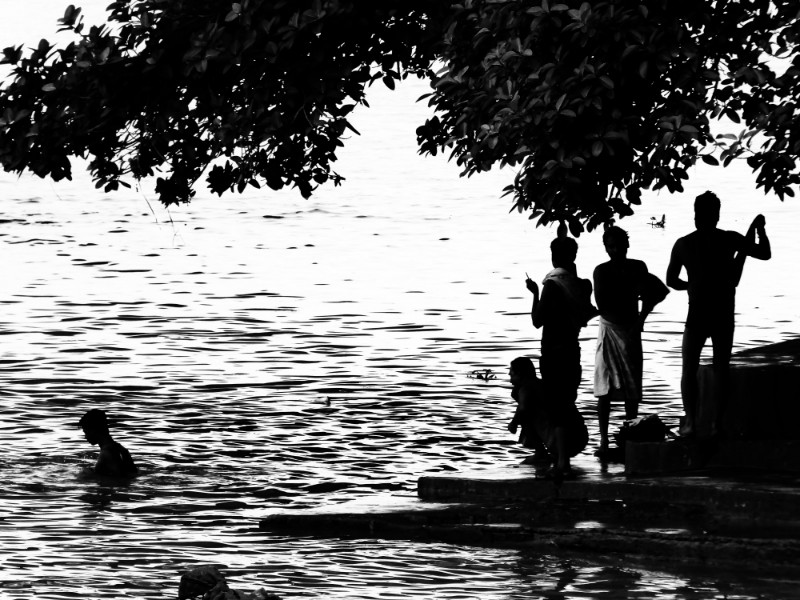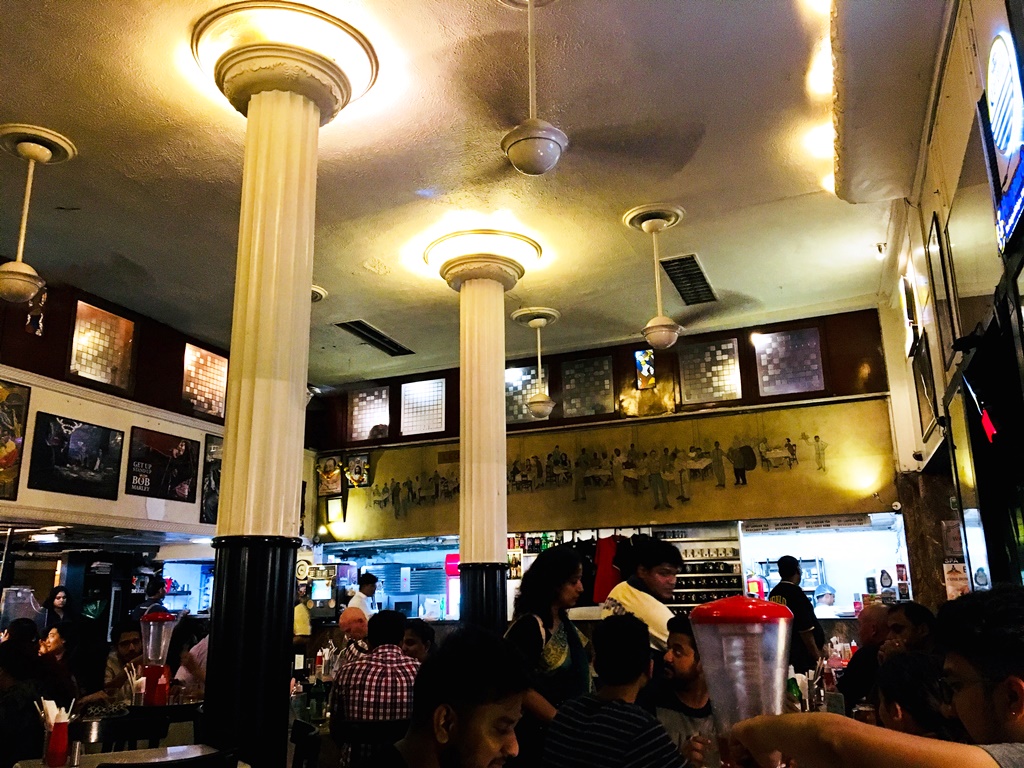Walking cities with my mother
/By Anandi Mishra:
Earlier this year during the covid-19 lockdowns in Delhi, I realised how much I had always loved walking not knowing why so. Flipping through old photo albums, I found photographs of myself walking in various cities. A friend or a boyfriend, always someone clicking me from the back, as the city spread itself out before me. Consuming walking nostalgia from the pre-covid era, reading different kinds of writing about walking, listening to podcasts about it, eventually I started dreaming about it. In one of those dreams, an ancient, grainy visual played. A memory from my childhood returned. My mother walking five or six steps ahead of me, as we both made our way to the nearby market in my hometown in north India, Kanpur. Watching her walk, always trying to keep pace with her, I had memorised the vision – always her walking, walking ahead, walking to or from, and me trying to follow, match her stride. That’s when I remembered how she was the one who had taught me mapping places on foot, implicitly, all throughout my childhood.
As a working woman in the 80s and 90s of north India, my mother defied several social odds. She was married, had two kids, an extended set of in-laws to take care of and an entire household to run, yet she chose to work. In addition to that, bereft of any personal vehicles, and due to the general plight of public transport in Kanpur, she walked to most places. So much so that walking became an extension of her personality. As I started going to school, she took me along, to accompany her on most such walks.
In those times (as now) to most people, walking was the very antithesis of existing in a city as a woman. It meant a certain slowing down, attentive step by step discursive engagement with the immediate surroundings that we were meant to avoid altogether in the first place. While on such walks, several times, men shouted at us telling us to hop on their cars or bikes, or to talk to them – but my mother carried on unperturbed, too consumed in the pleasures of her walk to respond to anything.
My predominant memory of walking with my mum when I was little is how fast she walked. Walking with her, I too quickly learned to look both ways and to run across the street, pace myself out of a thick crowd and never get lost.
This was in the decades before we knew of the concept of the flaneur or flaneuse. Now as I try to recall those formative experiences of walking, Walter Benjamin’s writing comes to mind. “The street becomes a dwelling for the flâneur; he is as much at home among the facades of houses as a citizen is in his four walls…. The walls are the desk against which he presses his notebooks; news-stands are his libraries and the terraces of cafés are the balconies from which he looks down on his household after his work is done.” If not in the same length, breadth or depth, but my experience of consuming the city was somewhat the same.
*
As we entered the twenty first century, the danger of getting lost and disconnected in technology loomed large. People fretted on the urban dweller’s dependence upon it and that it would mean an erosion or indefinite derailment of contact with others and nature. We were afraid that humans would be another notch removed from consciousness as the individual will no longer touch or be touched by what once was most natural. These fears eluded me, as I continued walking even into my late twenties.
I experienced a strange joy in being alone on the streets of various cities, at odd hours, walking with my phone in hand. I used the phone to record what I saw around. I wrote, took photographs and videos. It was not as though I was lost, but as if I was losing myself to the city.
Benjamin writes about this: “Not to find one’s way in a city may well be uninteresting and banal. It requires ignorance – nothing more. But to lose oneself in a city – as one loses oneself in a forest – that calls for quite a different schooling. Then signboards and street names, passers-by, roofs, kiosks, or bars must speak to the wanderer like a cracking twig under his feet in the forest…”
This was similar to the meandering walks my mother took in her days. She would walk from
her office to the bookstore, to the temple and nearby sweet shop in the vicinity. Ambling, she would take in the surroundings, nod and wave and say hello to her friends and acquaintances who ran several of the businesses, who she had made friends with over the years. While accompanying her I had learnt these primal pleasures of walking, measuring a city up and down by putting one foot in front of the other.
To be able to call a place my own she taught me, required that we first stray into unfamiliar streets, at strange hours. The shock of the new, she said, will be disruptive at first, but it will also break the insulating, silken lining of culture and grooming, allowing me to sink my teeth into a new way of exploring a place.
In walking thus so, we were able to transcend the immediate relationship of mother and daughter, and model a companionship as co-walkers. In pacing the city of my birth up and down, one foot before the other, my mother set an example for me before any of the modern day flâneuses, implicitly giving me permission to navigate my (or any) city on my own terms and make a place my own. Her constant insistence on walking, became a part of my body, culture and daily routine the way, as Garnette Cadogan writes in his seminal essay “Walking While Black”, “home became home”.
When I learned of the word “flânerie” it gave meaning and shape to my ways of reading the city by walking on foot. The Berlin flaneur Franz Hessel while writing about flânerie and flaneurs had said that they perceive passersby, streets, and fleeting impressions as the transitory signs of modernity. The more I read the more I unearthed the connections between flânerie and being a woman, and how female flânerie is a means of asserting female subjectivity in the public realm.
In her book Flâneuse: Women Walk the City in Paris, New York, Tokyo, Venice and London Lauren Elkin elaborates on that: “Why do I walk? I walk because I like it. I like the rhythm of it, my shadow always a little ahead of me on the pavement. I like being able to stop when I like, to lean against a building and make a note in my journal, or read an email, or send a text message, and for the world to stop while I do it. Walking, paradoxically, allows for the possibility of stillness. Walking is mapping with your feet. It helps you piece a city together, connecting up neighbourhoods that might otherwise have remained discrete entities, different planets bound to each other, sustained yet remote.”
That my hometown barely had any “walking infrastructure” did not deter my mother. In the remove of her strolls, she found solace. In sauntering, strolling, wandering, promenading, she created her own time. And I imbibed these learnings from here. To not rush through a walk as a commuter, or as a morning passenger running behind their bus.
In that way, all cities were immensely walkable. I loved pacing up and down the various soulless parts of towns, observing what was happening. Dull sidewalks were akin to the stage of a theatre. I saw people going about their odd jobs, sketchy businesses, small works, toiling away idiosyncratically. Watching people navigate through traffic, and other humans became my way of spending idle time. I invested hours in walking the sidewalks in big cities to get a broader view of how people live on the roadside, how the city is stitched together, the history and the present colliding at all times. On a drab day, walking through the melee of people that were always thronging the streets became my way of knowing my place in the world. And in the lockdown it felt poetically justified to remember that I had learnt it all from my mother.
***
Anandi Mishra is a Delhi-based writer and research communicator who has worked as a reporter for The Times of India and The Hindu. Her writing has been published by or is forthcoming in the Harvard Review, The Atlantic, Virginia Quarterly Review, Popula, LA Review of Books, and elsewhere. She tweets at @anandi010.













